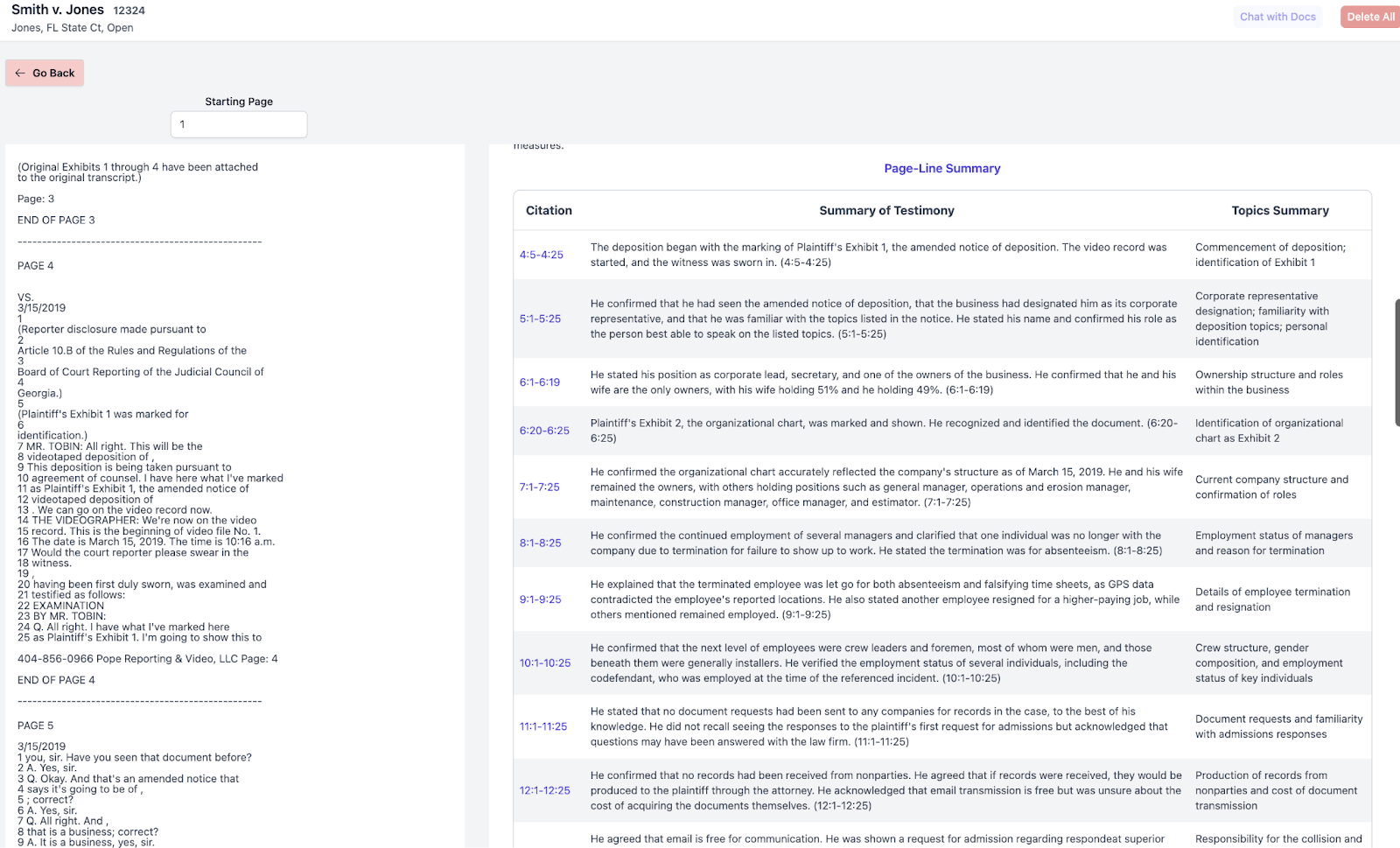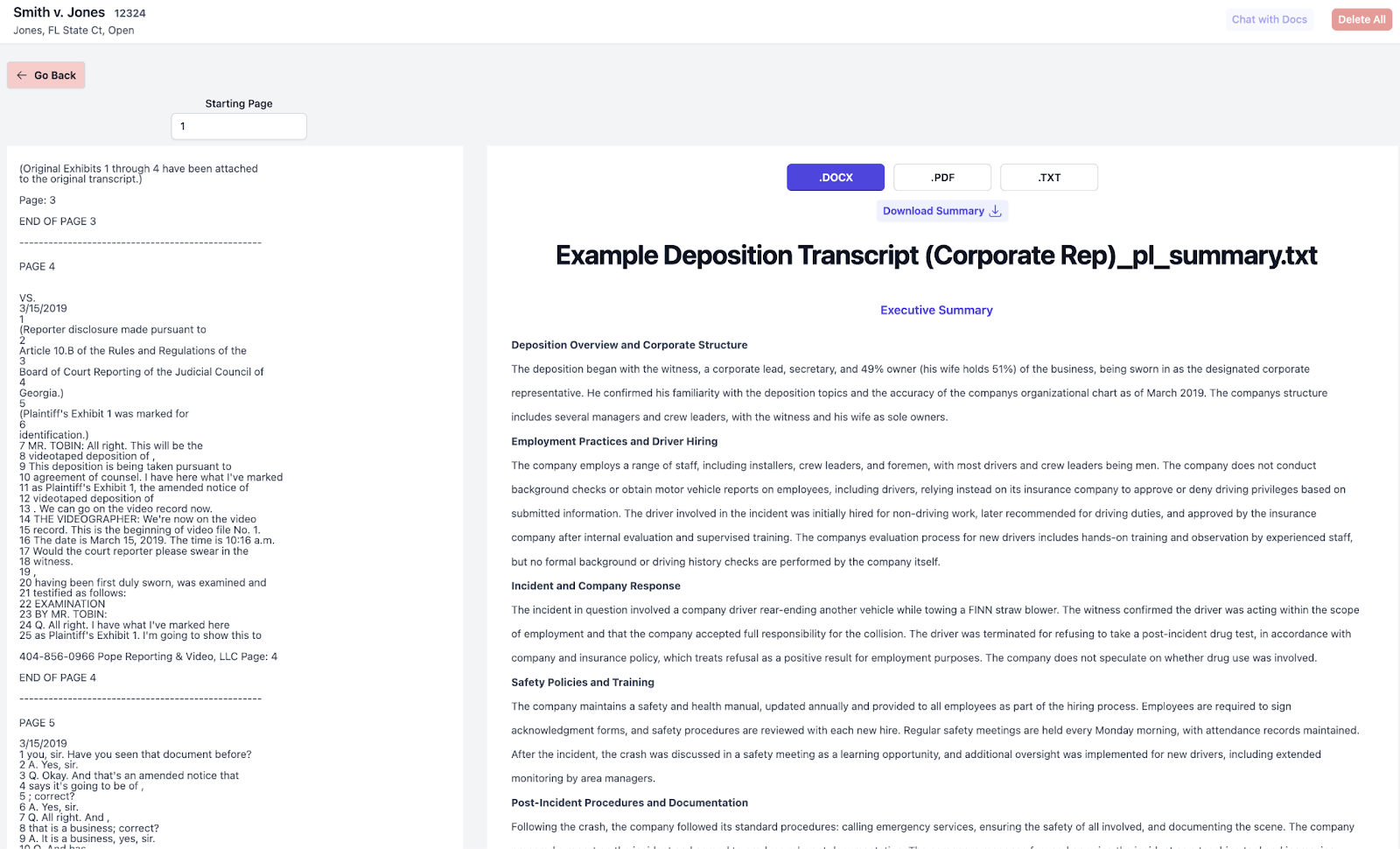
3 Mistakes in Manual Summaries (and How to Avoid Them)

When deposition transcripts accumulate, manual summaries are the only viable option. Even seasoned litigation teams lose hours and critical accuracy due to minor process errors that compound across reviews.
Below are the three most common mistakes in manual deposition summaries and how technology can help you avoid them.
Mistake 1: Missed Facts Due to Fatigue
Even the best paralegals hit a wall after hours of line-by-line reading. Long transcripts create cognitive fatigue, increasing the odds of missing subtle but pivotal facts, such as a shifted timeline or inconsistent testimony.
These oversights can lead to gaps in causation analysis and rework before trial.
With Dodon.ai:
Upload entire transcripts and our document automation software processes PDFs (including scanned PDFs via OCR) and standard text/Word formats, surfacing key facts and events automatically. Instead of combing through 200 pages, you can verify findings in minutes.
Mistake 2: Missing Page-Line Citations
A summary without page-line references forces attorneys to hunt through the original transcript again. It slows cross-checking, delays discovery responses, and undermines confidence in the output.
Every strong summary should link key statements to their exact source.
With Dodon.ai:
Page-Line summaries include page-line citations; Narrative summaries may not include page-line references so that reviewers can trace any claim back to its origin instantly. That means faster QA and less time rebuilding citations before production.
Mistake 3: Duplication Across Reviewers
In busy firms, multiple team members often summarize the same sections without realizing it, or worse, work from outdated versions. This duplication not only drains hours but also produces conflicting narratives.
Without a standardized deposition summary workflow, teams spend more time reconciling drafts than analyzing facts.
With Dodon.ai:
Summaries are saved to your account so you can reference them later.

Building a Better Deposition Summary Workflow
A well-defined deposition summary workflow should reduce fatigue, ensure citation accuracy, and maintain version control across reviewers.
By combining automation with attorney oversight, litigation teams can maintain high accuracy while reducing total prep time from hours to minutes.

Learn more about Dodon.ai
See how Dodon.ai Deposition Summary Software automates citation-ready summaries, or explore how it extends to AI Medical Record Summaries and Chronologies for full-case prep efficiency.
Start your 7-day trial today at Dodon.ai.
Try Dodonai Free






.png)















